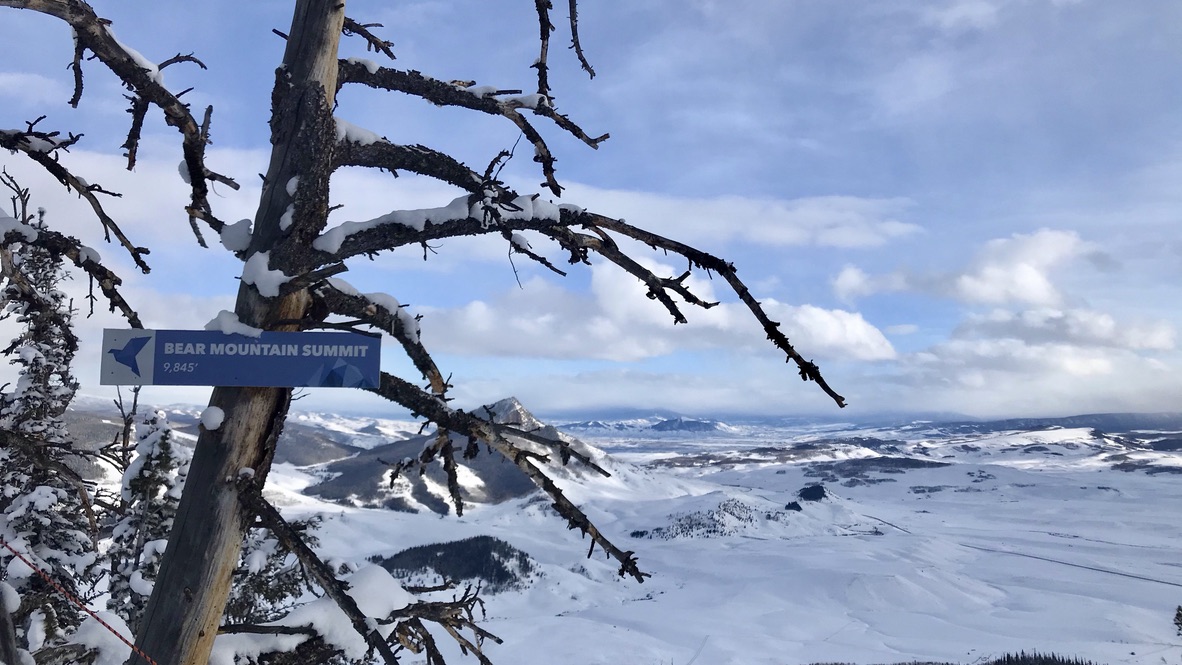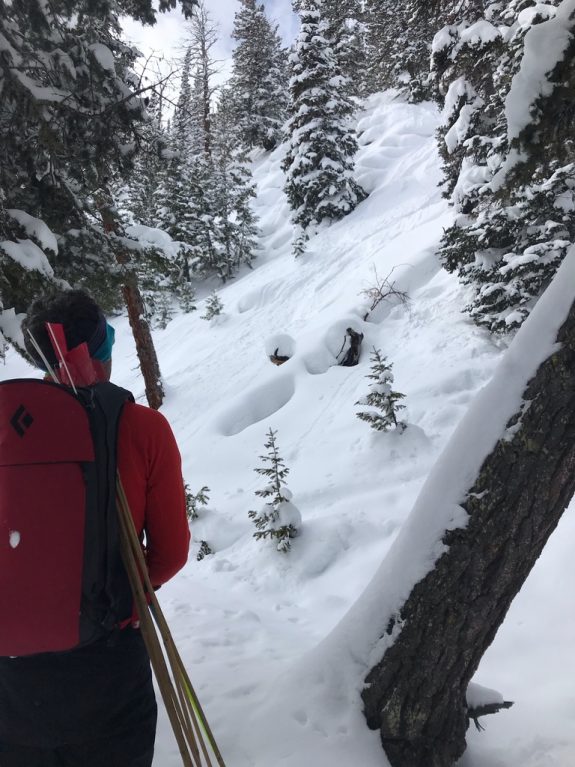“Drop your stuff,” Bluebird Backcountry co-founder and CEO Jeff Woodward instructed, “grab a volunteer ski pass inside and get ready to break a whole lot of trail.” Wearing reflective goggles, smudged green Patagonia ski pants and a navy blue shell with the Bluebird Backcountry logo etched on the chest, Jeff wasn’t dressed like a typical CEO. But then, Bluebird Backcountry isn’t a typical ski resort.
I was standing in a snowpacked base area in the middle of a gusty meadow in the quiet stretches of northern Colorado. To my left was the ‘lodge’ — a giant heated dome that triples as a ski rental shop (skis, boots, skins, avalanche equipment), retail shop, and registration counter. Next to the lodge I spotted a group of six skiers standing in a circle with beacons out, their heads tilted to the displays. On the other side of the dome, beyond a snow-walled plaza of wind breaks and Adirondack chairs circled around firepits, I watched a pair of balloon pack-toting skinners shuffle up one of the gentle slopes out of the base area.
You could say that the concept of Bluebird Backcountry gained popularity before the actual execution had a chance to. The backcountry-only ski area has received an enormous amount of press over the past year and a half, from major outfits like the New York Times, Forbes, Denver Post, and Outside magazine. (Doug also interviewed co-founder Erik Lambert on Totally Deep Podcast last winter.) It’s an attractive concept: A human powered ski area where novices and experienced tourers alike can take intro to backcountry classes, AIARE avalanche courses, go out for a guided day of skiing, or just tour on their own in avalanche controlled, ski patrolled non-groomed terrain.
Last year’s initial test season was short and took place on a nearby ranch with terrain characterized more by snow-coated sage fields than ski runs. But this winter, Bluebird shifted to a different ranch with triple the terrain — they’re currently operating on 1200 acres with the potential for more. And the timing couldn’t be better as ski touring experiences a historical boom with many new users hungry to learn the ways of traveling off piste.
Doug and I arrived at Bluebird on a sunny morning last week to set the course for the area’s inaugural ski mountaineering race, the Bacon Brawl. (Bacon is a theme at the area; there’s even a skin-to warming hut where bacon is always cooking). Bluebird reported a whopping 75 inches of snow over the two weeks prior, which, let’s be honest, probably saved their bacon considering it had been such a dry winter throughout Colorado.
So, what’s it like to hang around a backcountry ski resort? Here are some highlights from our trip.
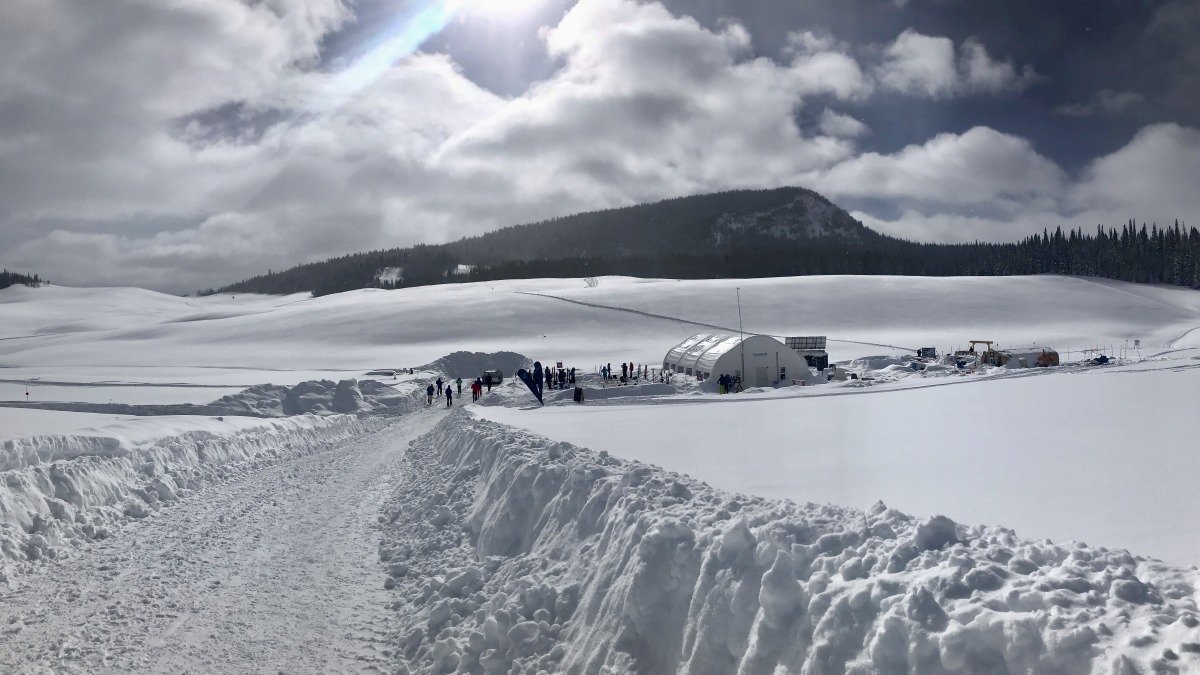
At the end of a two-mile driveway that feels akin to passing through a snow trench, you arrive at the makeshift base area with a bar, mini cafe, rental and retail shop, and no sign of a ski lift.
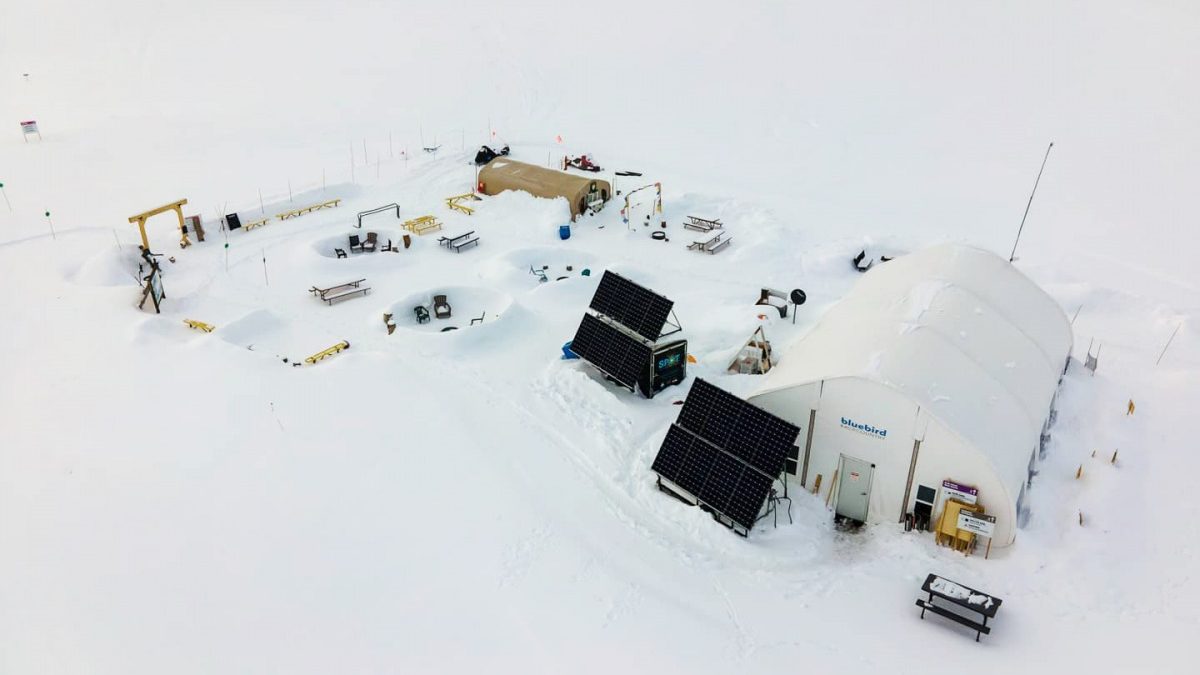
Base area from above. All skiers have to pass through the wooden archway to the left where they pass through a beacon checker, get their passes scanned, and show their shovels and probes to a staff person stationed there. Photo: Justin Wilhelm
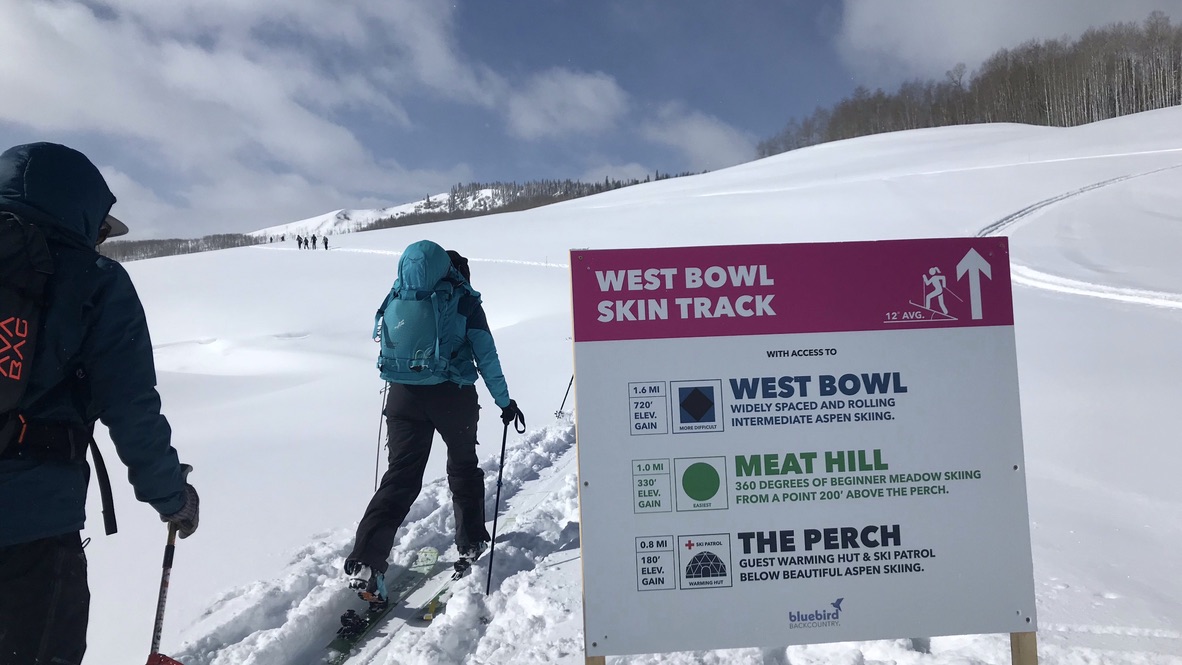
All skin tracks are established and well marked. Tourers can head out on their own, take part in introduction to backcountry and avalanche courses, or spend a day with a guide.
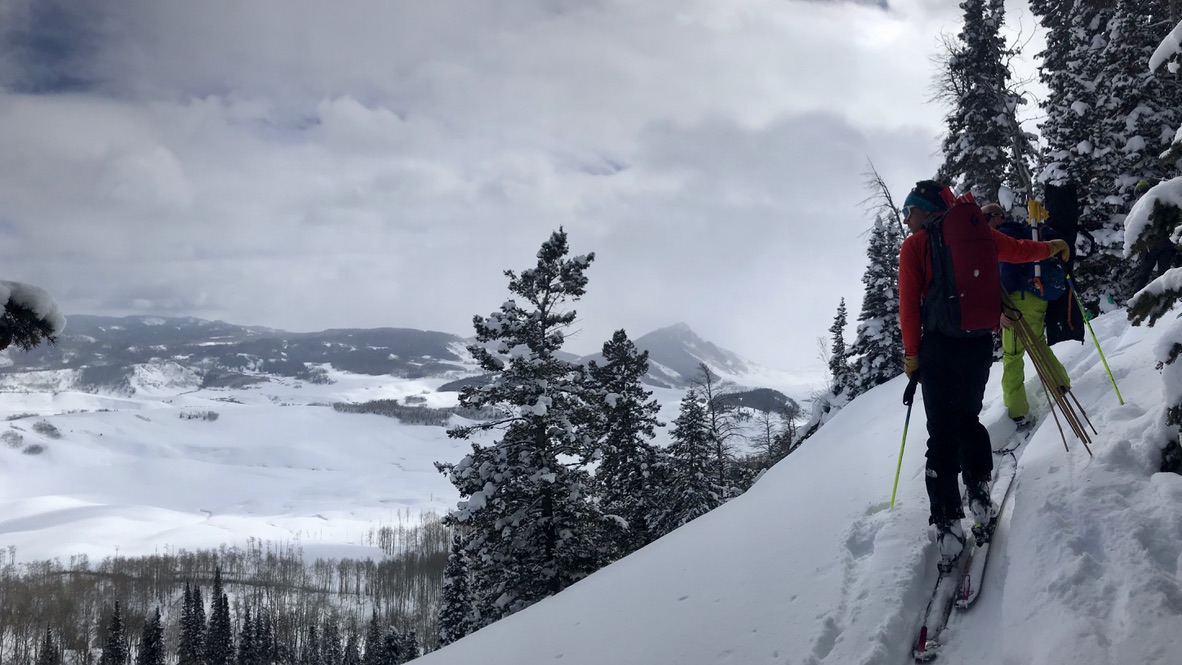
To set the race course, we got to unopened areas where we found surprisingly cool terrain features above aprons of well-spaced aspen groves.
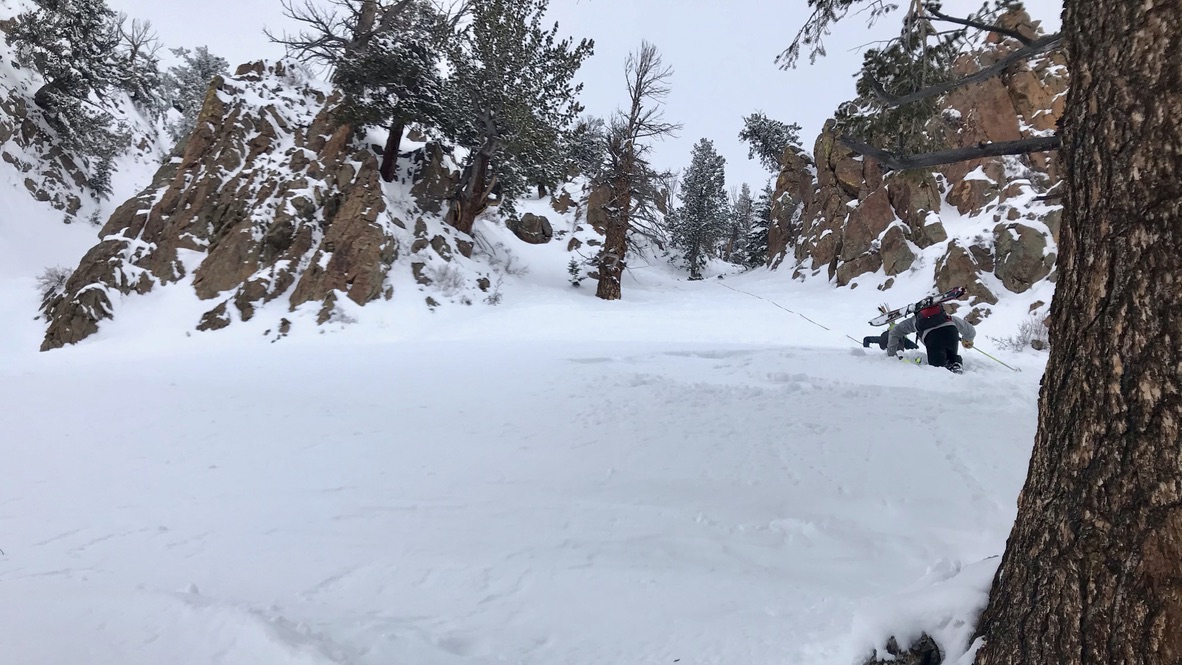
This couloir, dubbed the Cosmic Couloir in the spirit of the race series, offered an adventurous boot pack. It’s part of guided-only terrain that wasn’t open yet.
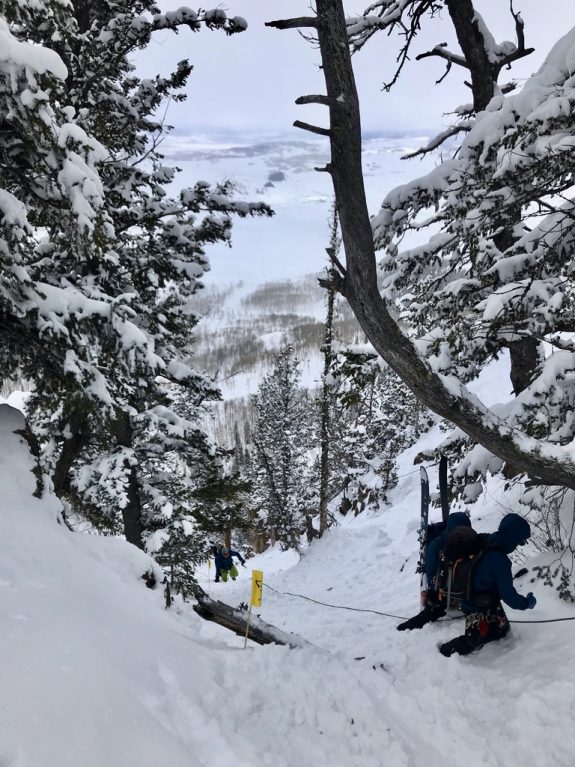
Cosmic Couloir view from the top. Bluebird has a collection of ski patrollers who mitigate avalanche danger with skier cuts and bootpacking.
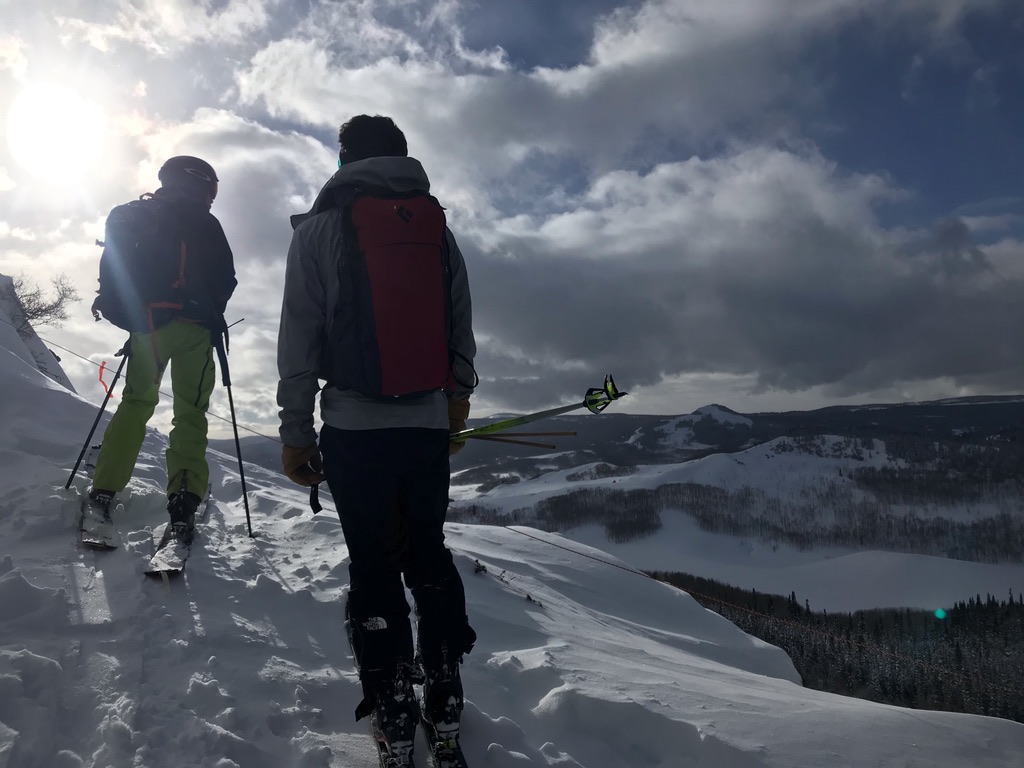
Late afternoon light on the northern Colorado mountains. Just out of site is Rabbit Ears peak and the road to Steamboat Springs.
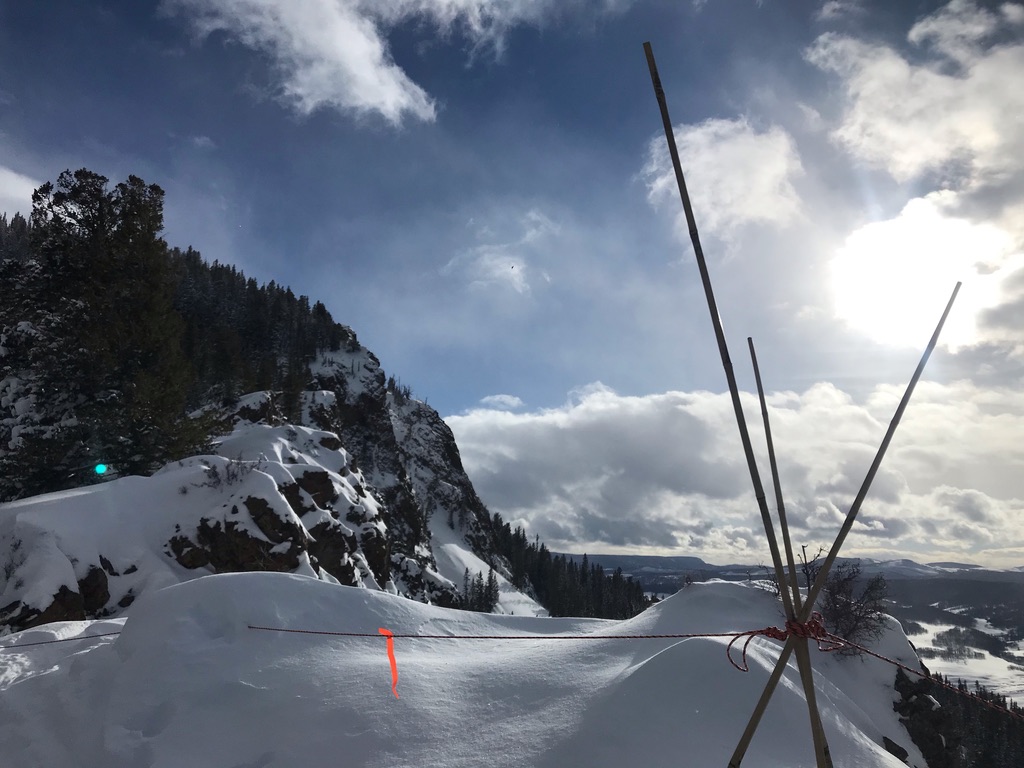
Ski area boundaries are marked like a typical resort would be. Dangerous features, like the giant terrain trap on the north face of Bear Mountain are also roped off.
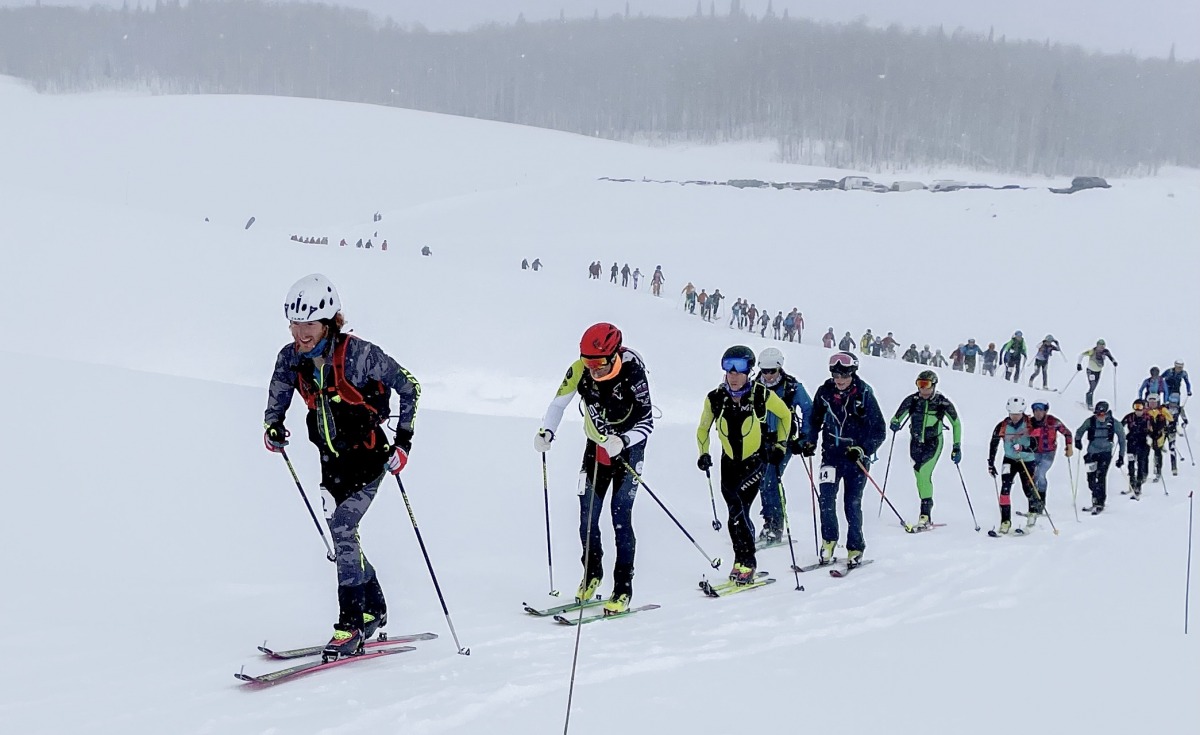
As for the Bacon Brawl, it was a success. Capped at 75 racers, it sold out within days of opening registration. Racers toured up and down Bear Mountain and a sub peak for a total of 4500 feet of climbing and descending over 10 miles.
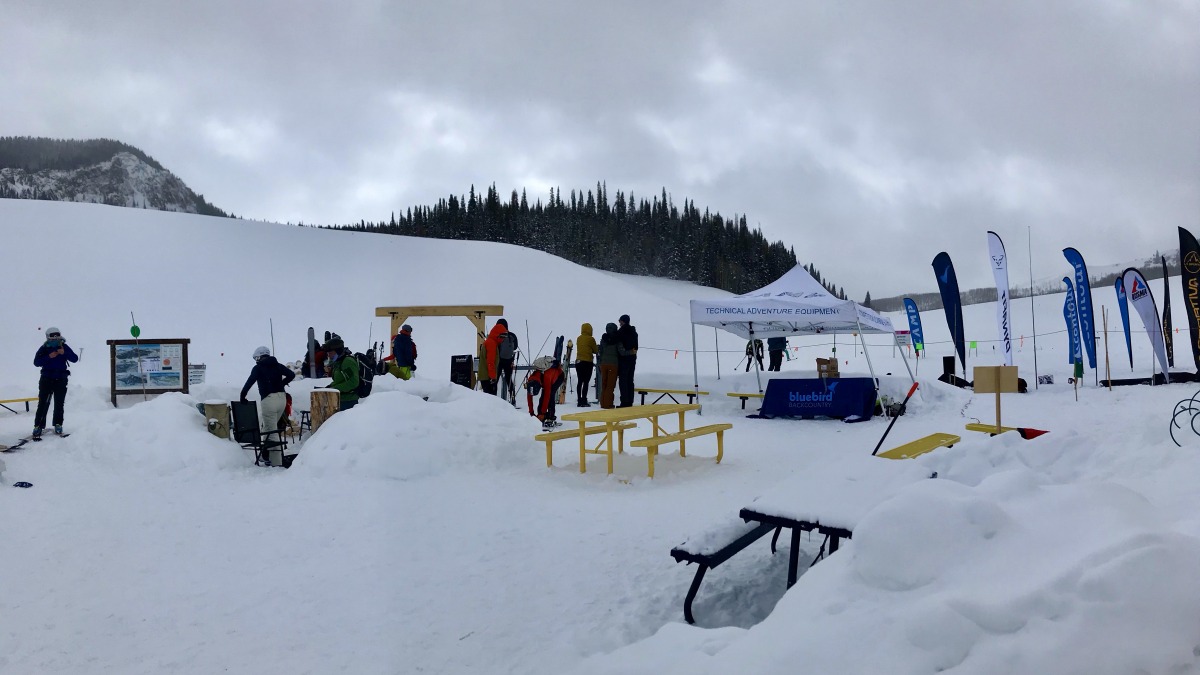
There was no awards ceremony after the race but well distanced social time was had in the base area.
I have to admit, when we first pulled into the parking lot I wondered if we really needed to drive three hours to tour at Bluebird. From photos on the website (and my own personal history passing through the area to get from Laramie, Wyoming to actually decent skiing while in grad school), the terrain didn’t look particularly exceptional. Not to mention, northern Colorado is notoriously colder and gustier than the central Rockies we call home and I was dubious toward the potential snow quality.
But the more time we spent there, the more the place grew on me. At Bluebird, the barriers to backcountry skiing — gear, knowledge, community, safety — are stripped away. The entire scene is oriented around accessibility. It not only welcomes new users and takes them from their first skin track to their first avalanche course and beyond, it offers something that can take a while to cultivate in a sport so individually or small-group focused as ski touring: a community atmosphere. Sure, you have to pay for that access, but that fact doesn’t make it less salient or appropriate for the times.
Does having skin tracks and down tracks marked take out some of the adventure of backcountry skiing? Of course it does. But it also offers the chance for new ski tourers to develop foundational knowledge of their gear and their surroundings without having to worry (yet) about terrain management and constant evaluation.
Of course, there is the question of powder, and no, it’s not guaranteed. On our course setting day, we did find soft turns in zones that hadn’t yet been opened to the public. The lines we skied that are open, however, had been tracked up-bordering on bumped up. But maybe that’s not the worst thing.
If we strip away also the notion that backcountry skiing is entirely about getting the powdery goods, it opens up the opportunity for the joy of the tour to be the focus. That is, the journey of walking up mountains and skiing down them in good company regardless of conditions is the destination itself and soft, over the shoulders powder skiing is just a bonus.
Call me an idealist, but as backcountry skiing grows, places like Bluebird might be exactly what the sport needs.
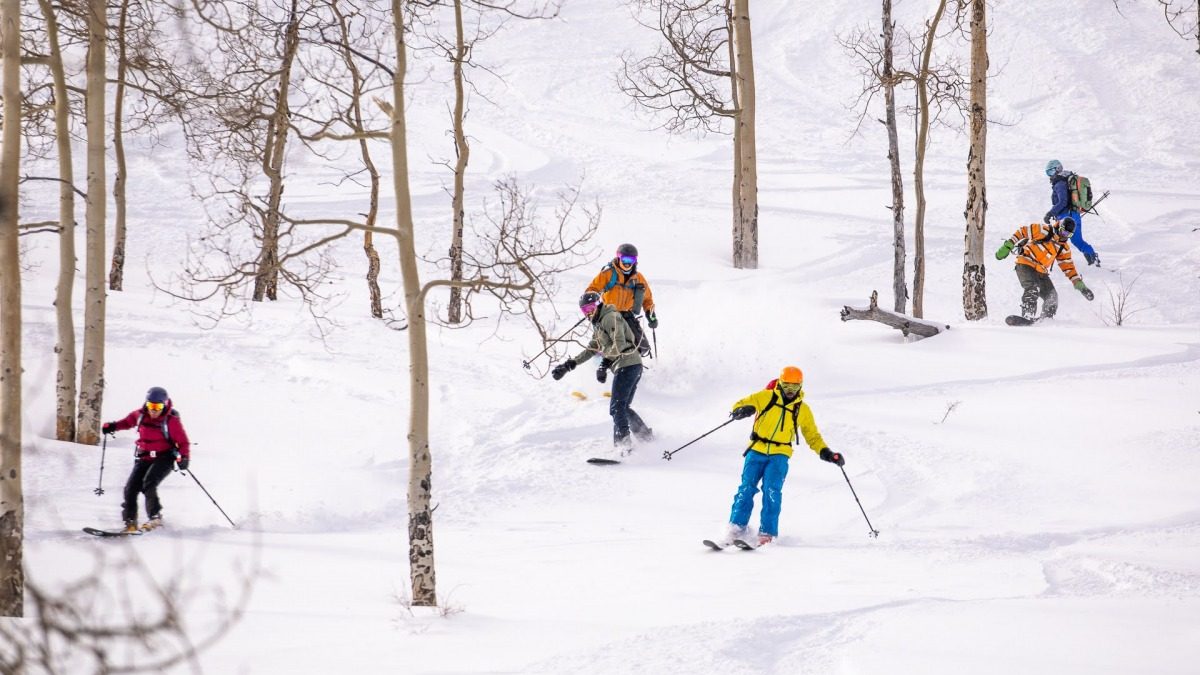
A crew enjoys low-angle powder turns in one of the many aspen groves on the property. Photo: Justin Wilhelm
Manasseh Franklin is a writer, editor and big fan of walking uphill. She has an MFA in creative nonfiction and environment and natural resources from the University of Wyoming and especially enjoys writing about glaciers. Find her other work in Alpinist, Adventure Journal, Rock and Ice, Aspen Sojourner, AFAR, Trail Runner and Western Confluence.

